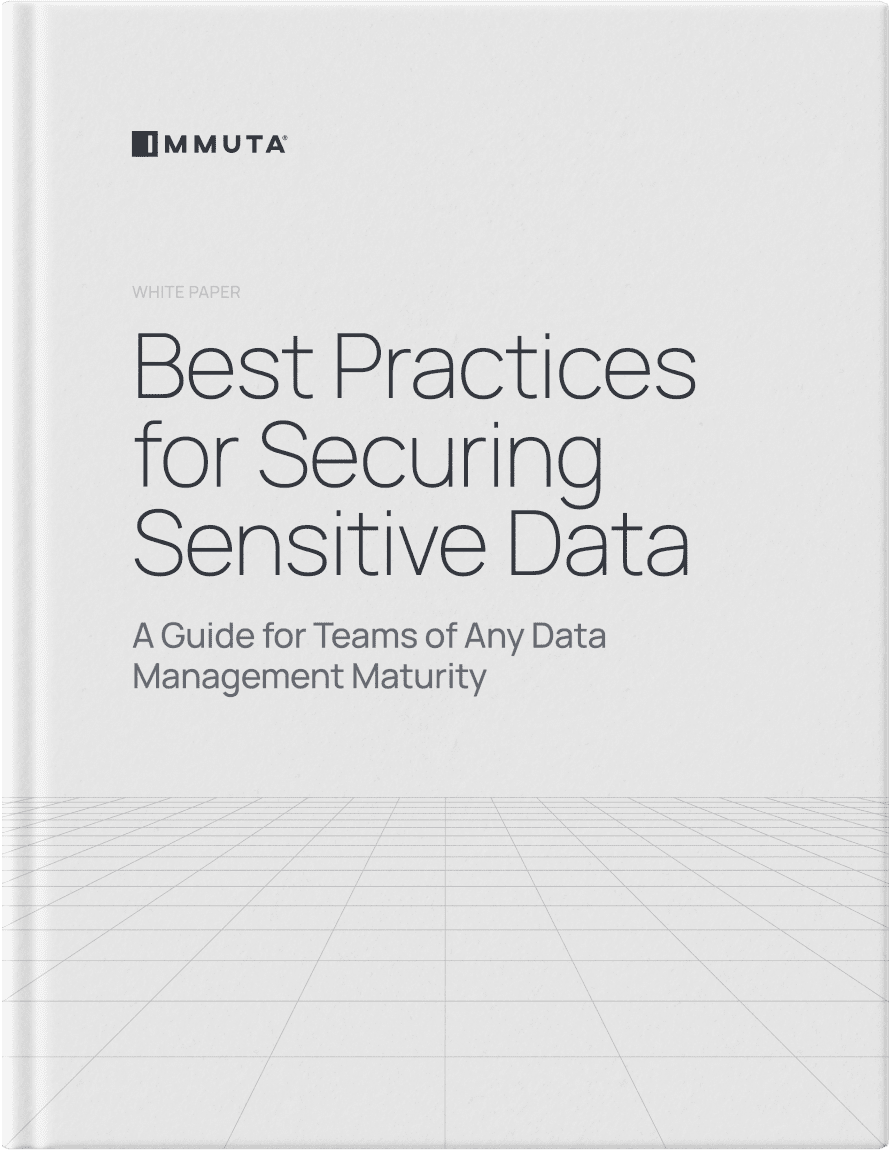Best Practices for Securing Sensitive Data
A Guide for Teams of Any Data Management Maturity


According to the United States’ Cybersecurity & Infrastructure Security Agency (CISA), 47% of American adults have had some amount of their personal information exposed by cyber criminals. With the volume of data that today’s organizations collect, store, and leverage on a day-to-day basis, no one wants to be responsible for the next information-exposing data leak or breach that raises this number.
In order to best prepare the modern data stack against the risks of cyber crime and risky data use, teams need to develop an understanding of the threats they face. It is only with this knowledge that they can strengthen their data security measures against potential hazards. In this blog, we’ll discuss how to understand your cyber threat landscape, how it differs from an attack surface, and how you can conduct and act upon a cyber threat landscape assessment.
The cyber threat landscape encompasses the entire range of identified and potential cyber threats that could negatively affect a particular user group, business, sector, time period, or other grouping. It is the collection of hazards that could, at any given time, threaten the security and privacy of both users and information in a data ecosystem.
To gain the most comprehensive understanding of this landscape, teams must be aware of contextual details about the threats to their information, including specific network vulnerabilities, particular groups of attackers, and common attacks and techniques used against their type(s) of data. They must also understand the software and hardware in their data stacks, including particular functionalities and potential weaknesses.
The cyber threat landscape is dynamic, changing often in relation to emerging threats, software updates, evolving geopolitical movements, and more. Threats can be internal, like users leaking sensitive information, or external, like hackers attempting to copy and extract data resources. To best maintain data security and privacy amidst all of this risk, teams must have an up-to-date understanding of the threat landscape as it pertains to their users, activities, and data.
Another popular concept in cyber crime prevention is known as the “attack surface.” While this term may sound similar to cyber threat landscape, each has its own distinct role in securing data against risk and/or attack.
The attack surface is a narrower concept than the cyber threat landscape. It focuses on the sum of points at which an unauthorized user might be able to gain access to a network, and is concerned only with the ways in which someone could breach the network, not the various other internal and external risks. The smaller the attack surface, the lower the risk of unauthorized data access and cyber crime.
The cyber threat landscape, on the other hand, is the total combination of threats and hazards to data security. This requires an in-depth understanding of the factors discussed in the previous section, not just an understanding of attack points.
Think about a medieval castle surrounded by fortified walls. The walls are the castle’s attack surface. As the first obstacle that attackers would encounter, any damaged portion, open gate, or scalable surface could lead to breach. The threat landscape includes a broader range of factors: Which local lords are unhappy with the royals? Are there bandits in the area? The inhabitants would need to regularly examine all of these factors in order to keep their castle safe.
How can today’s data teams maintain a comprehensive understanding of the cyber threats that put their data at risk? By completing regular cyber threat landscape assessments. These assessments, which should be carried out regularly based on an organization’s data use and objectives, typically follow five steps:
Before you can manage threats to your data, you need to understand what kinds of assets are present in your network. This requires taking stock of all data sets through data discovery, then classifying and tagging data based on its type and level of sensitivity.
Based on your organization, your data ecosystem may contain personally identifiable information (PII), protected health information (PHI), financial or demographic information, business data, and beyond. Each of these types of data varies in sensitivity, and requires a different level of sensitive data protection to fortify it against risk. Gaining an understanding of where this data lives and how it is used within your network can help your team prioritize how and where to protect your resources from threats.
The type and number of cyber threats that apply to your organization can vary based on factors like industry, location, technology, and more. This means that there’s no predefined threat landscape that you can use to understand the greatest risks to your data.
Instead, teams should take the time to research the threats most applicable to their organization’s resources. This requires identifying similar companies that are being targeted by cyber threats, what kinds of customers they have, and how recent attacks have been carried out. By examining a host of incidents that have occurred across your industry, you can better understand the kinds of threats that are likely to target your organization as well.
Now that you understand the types of data in your network and the most probable threats, it’s important to study any vulnerabilities in your ecosystem that may pose a risk to sensitive data. This part of the process requires the efforts of internal teams and an external assessor to gather a holistic picture of your network’s weak points.
Internal teams will have the best understanding of your data ecosystem’s construction and maintenance. External assessors, on the other hand, can explore your weak points from outside of the network, probing at the structure and finding where it is most vulnerable. By examining the network from both inside and out, you’ll be able to compile a full list of weaknesses that a potential threat could exploit.
With assets classified, threats examined, and vulnerabilities identified, your team can take direct action to protect data from unauthorized access. Using dynamic access control methods, teams can create policies that permit and restrict access based on a range of important factors. When using attribute-based access control, these policies are based on attributes like job title, location, clearance level, team, and more.
Attribute-driven policies can be easily adjusted to only grant access to the users that should have it. With the policies in place, no other users–either internal or external–will be able to query your sensitive data. Additionally, policies written in plain language can be understood across teams, fostering a common understanding of how and why certain resources are protected.
The final step in a cyber threat landscape assessment is to educate your data users about the landscape and the security measures in place to protect against risks. This helps ensure they are informed and able to effectively leverage your organization’s data.
While much of the threat landscape can be attributed to external actors or technological weak points, human error also contributes to the risk of data leaks and breaches. By educating data users on how to intelligently and securely interact with sensitive data, and providing transparency into the threat landscape and prevention methods, you can ensure that your user base is unified in your mission to be threat-averse.
With these steps in mind, teams should feel prepared to regularly assess their organization’s cyber threat landscape in order to maintain rigorous and multifaceted data resource protection.
To act upon the knowledge ascertained in a threat landscape assessment and apply data security solutions in their network, teams need a platform that facilitates dynamic, universally-applied security policies while keeping data assets accessible to those who need them. This is where a data security platform can play an integral role in any modern tech stack.
By applying a tool that enables sensitive data discovery, data can be discovered and classified as it enters the network. Teams can then create dynamic data access policies in order to secure data against the many threats that are relevant to their industry and practices. These plain language policies protect against unauthorized access, while remaining clear and understandable for the users who are subject to them. Teams can then incorporate continuous data monitoring and breach detection in order to survey the network for any threats or risky user behavior.
To learn how the Immuta Data Security Platform empowers modern data teams to protect against their evolving cyber threat landscapes, request a demo from one of our experts today. If you’d like to learn more about securing data from risk and threats, check out our eBook Best Practices for Securing Sensitive Data.

A Guide for Teams of Any Data Management Maturity
Innovate faster in every area of your business with workflow-driven solutions for data access governance and data marketplaces.